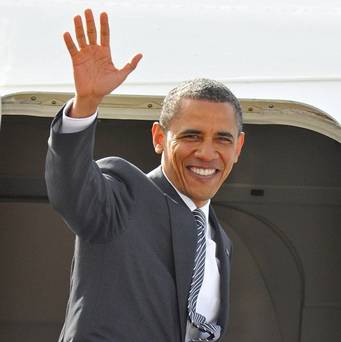Obama’s surprise trip comes as the U.S. and NATO withdraw most of their forces ahead of a year-end deadline. Obama is seeking to keep a small number of U.S. troops in Afghanistan beyond 2014 to train Afghan security forces and conduct counterterrorism missions. But that plan is contingent on Karzai’s successor signing a bilateral security agreement that Karzai has refused to authorize.
Obama’s visit also was taking place against the backdrop of growing outrage in the United States over the treatment of America’s war veterans. More than two dozen veterans’ hospitals across America are under investigation over allegations of treatment delays and deaths, putting greater scrutiny on the Department of Veterans Affairs. The agency already was struggling to keep up with the influx of forces returning home from Afghanistan and Iraq.
At least 2,181 members of the U.S. military have died during the nearly 13-year Afghan war and thousands more have been wounded. There are still about 32,800 U.S. troops in Afghanistan, down from a high of 100,000 in mid-2010, when as Obama sent in additional soldiers to quell escalating violence.
This was Obama’s fourth visit to Afghanistan as president, but his first since winning re-election in 2012.
He was expected to be briefed by U.S. commanders in Afghanistan, speak to troops at Bagram and visit injured troops being treated at a base hospital.
As is typical of recent presidential trips to war zones, the White House did not announce Obama’s visit in advance. Media traveling with Obama for the 13-hour flight had to agree to keep the trip secret until the president arrived at the air base.
Obama has staked much of his foreign policy philosophy on ending the two wars he inherited from his predecessor, George W. Bush.
The final American troops withdrew from Iraq in the closing days of 2011 after the U.S. and Iraq failed to reach a security agreement to keep a small American residual force in the country. In the years that have followed the American withdrawal, Iraq has been battered by resurgent waves of violence.
U.S. officials say they’re trying to avoid a similar scenario in Afghanistan. While combat forces are due to depart at the end of this year, Obama administration officials have pressed to keep some troops in Afghanistan after 2014 to continue training the Afghan security forces and undertake counterterrorism missions.
Pentagon officials have pushed for as many as 10,000 troops; others in the administration favor as few as 5,000 troops. Obama has insisted he will not keep any Americans in Afghanistan without a signed security agreement that would grant those forces immunity from Afghan law.
U.S. officials had hoped plans a post-2014 force would be well underway by this point. But Karzai stunned U.S. officials this year by saying he would not sign the security agreement even though he helped negotiate the terms. The move signaled that Karzai does not want his legacy to include a commitment to allow the deployment of international troops in his country any longer.
Karzai’s decision compounded his already tense relationship with officials in Washington who have grown increasingly frustrated by his anti-American rhetoric and decision to release prisoners over the objections of U.S. officials. Obama and Karzai have spoken just once in the past year.
By skipping a meeting with Karzai while in Afghanistan, Obama is signaling that the White House already has discounted the Afghan president as a worthwhile partner.
Karzai, the only president Afghans have known since the 2001 U.S.-led invasion to topple the Taliban’s Islamic rule, was constitutionally barred from running for a third term this year. An election to choose his successor was held this month, with the top two candidates advancing to a June runoff.
Both of those candidates, former Foreign Minister Abdullah Abdullah and ex-Finance Minister Ashraf Ghani Ahmadzai, have promised a fresh start with the West and pledged to move ahead with the security pact with the United States.

0 Replies to “Obama visits Afghanistan”